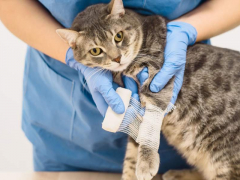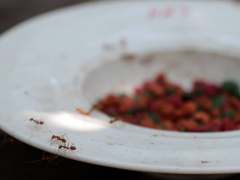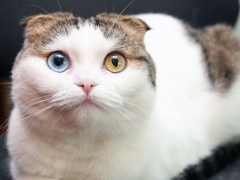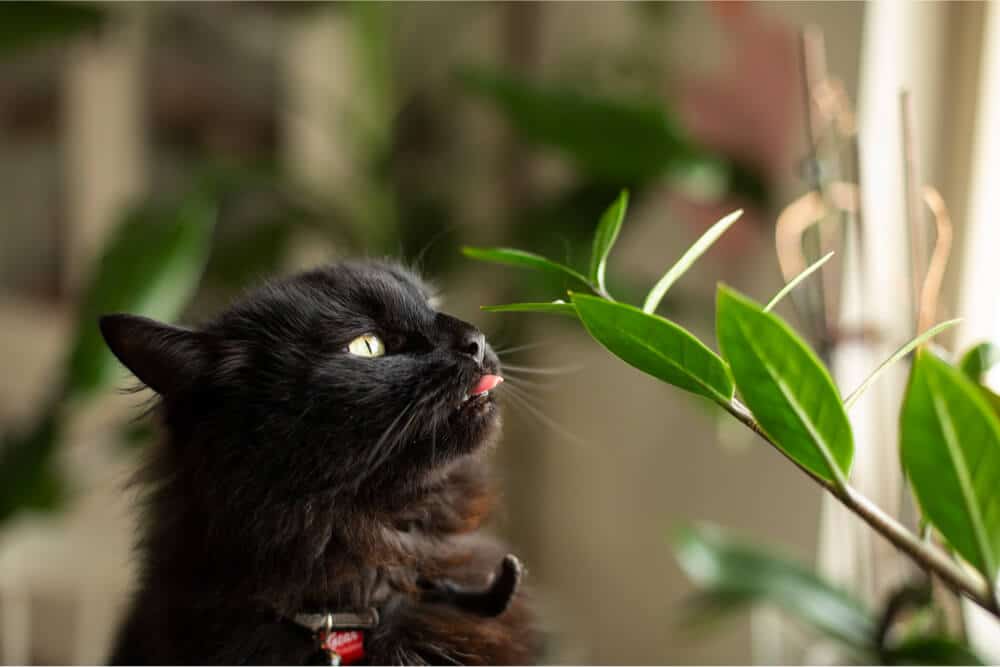
With many indoor plants coming with dire warnings for pet owners (hello lilies!), it can be tricky to find a balance between being responsible pet parents and wanting some greenery in your life. Cats can be mischievous, and some flowering plants are certainly not suitable to have in a home with pets who may take a nibble off them. Thankfully, there are cat-friendly flowers and plants out there.
We’ve compiled a list of non-toxic plants that are pet-friendly and perfectly safe to have in a home with cats and dogs, so you can rest easy. From sunflowers to African violets, there’s a flower for everyone, and for every cat.
Also Read: 10 Toxic & Poisonous Plants For Cats
21 Pet-friendly Plants And Flowers
1. African Violet
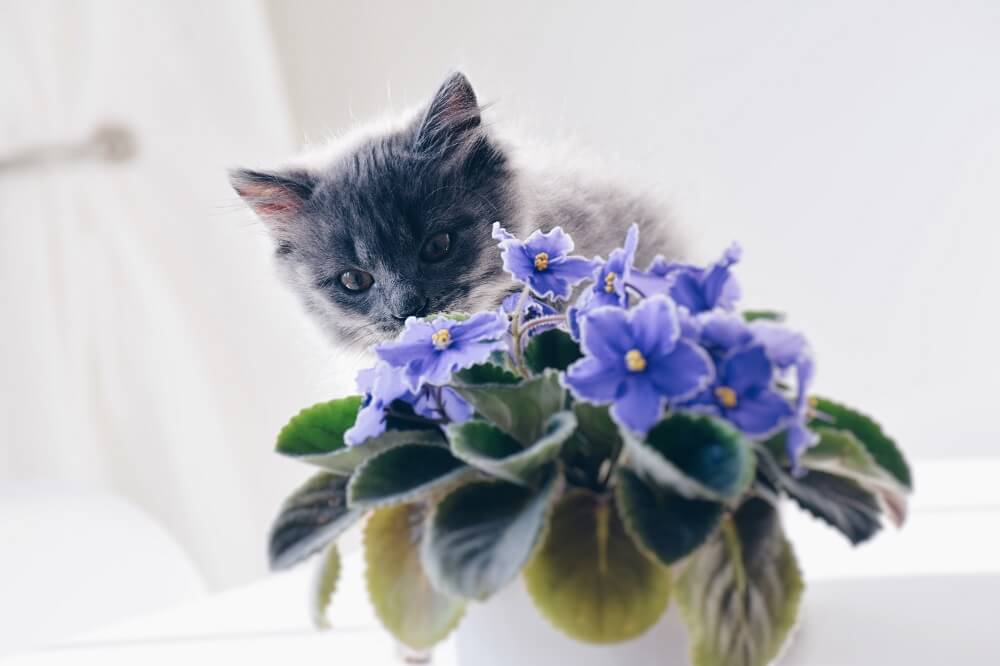
These low, compact plants produce thick, dark leaves and gorgeous violet blooms. Along with being non-toxic to cats, African violets are also low maintenance and bloom all year round – a winner for house plant beginners!
2. Bird’s Nest Fern
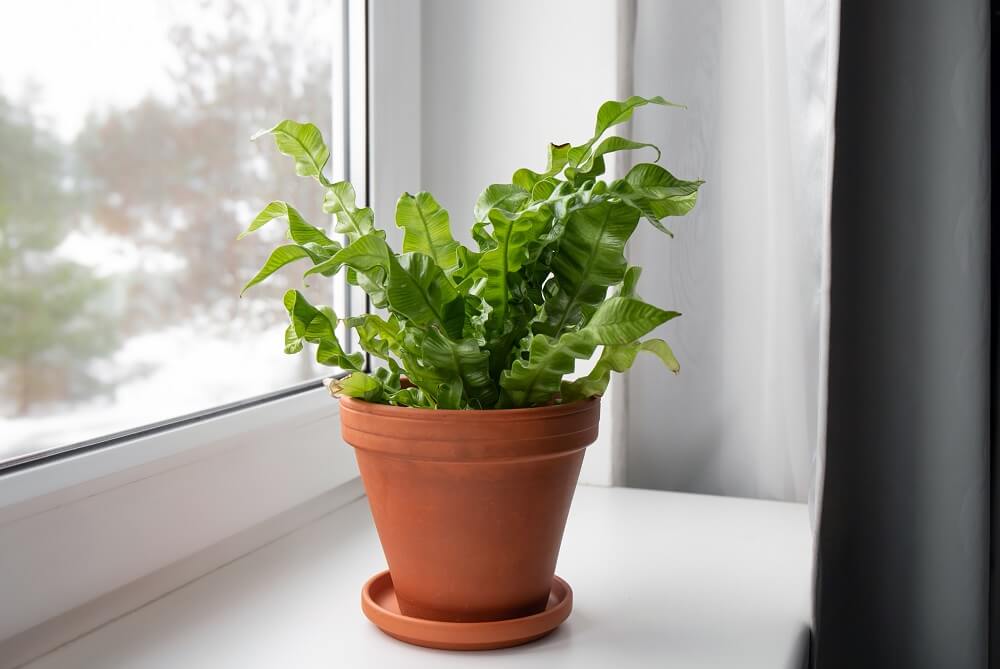
This distinctive-looking plant has long, crinkled fronds. It thrives best in low-light areas but with high humidity, so is often found in bathrooms.
3. Boston Fern
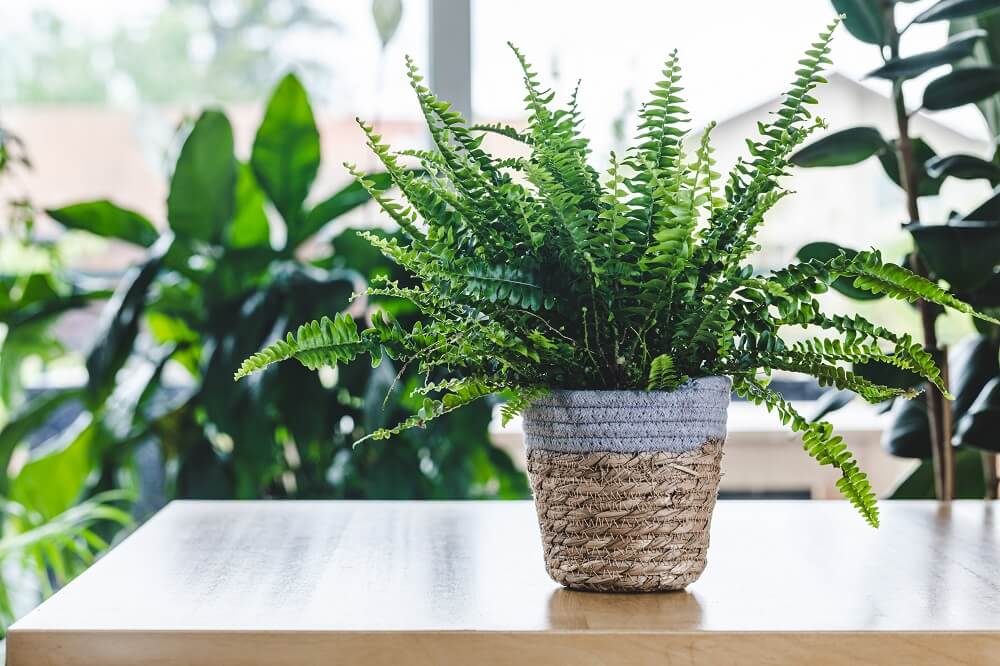
This is one of the best houseplants to add to your home, as it is on NASA’s list of best air-purifying plants – and it happens to be cat-friendly! It likes a warm, but out-of-direct sunlight spot to grow, and requires good humidity.
4. Bromeliad
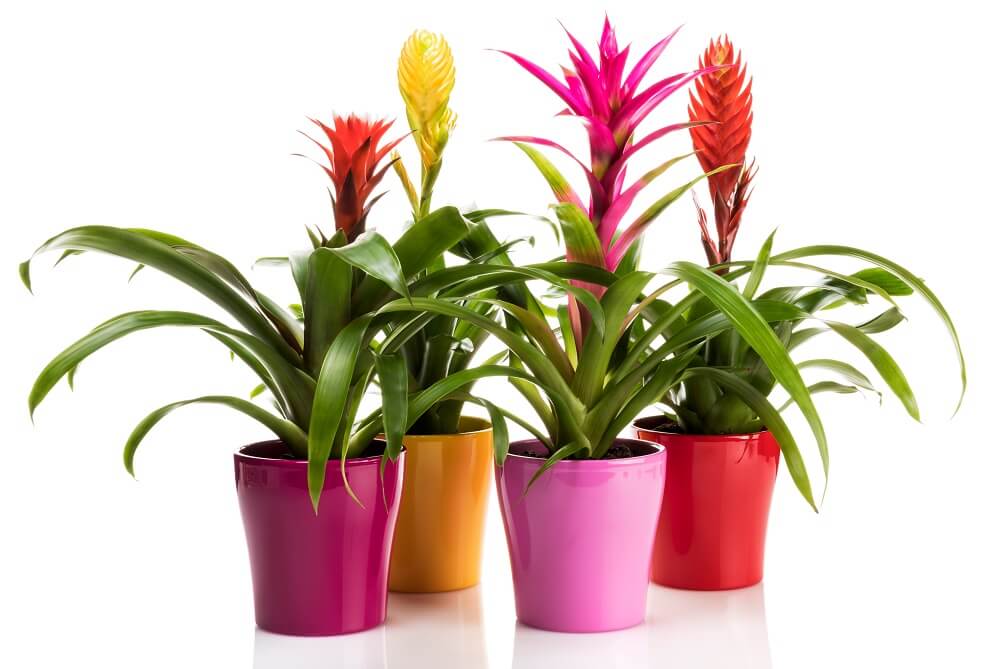
These popular houseplants are vibrant and colorful, with their beautiful cat-friendly flowers blooming in shades of maroon, green, and gold. They need adequate drainage (don’t overwater!) and bright light and are very safe.
5. Cast Iron Plant
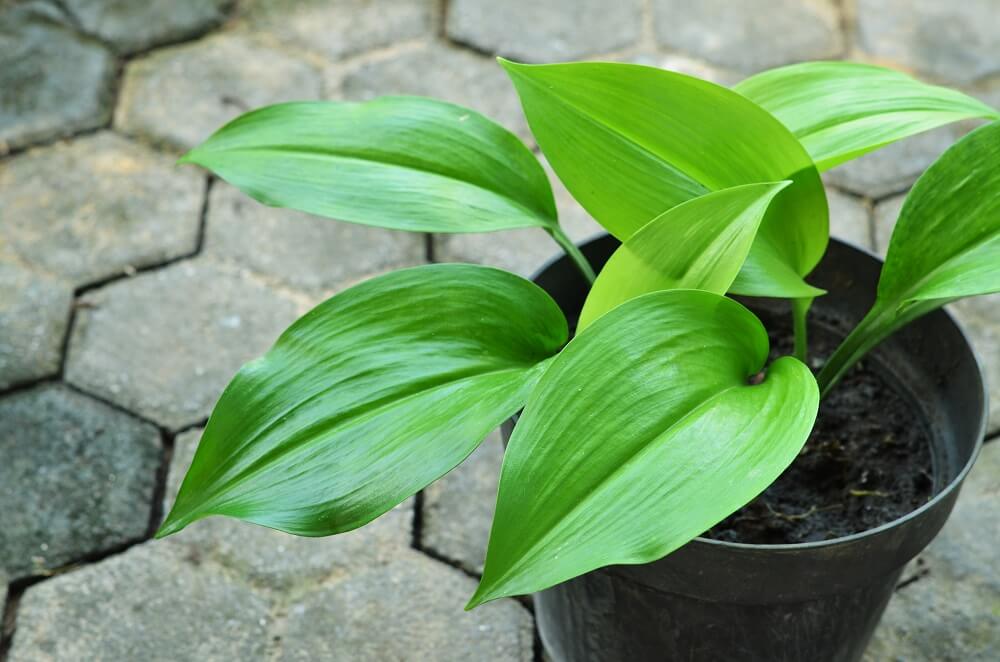
These pet-friendly houseplants are low maintenance on the plant care scale, as they require only indirect light and not much watering. You may need some space, though; they have big oval leaves which can reach around two feet long, and the whole plant grows around three feet high.
6. Calathea
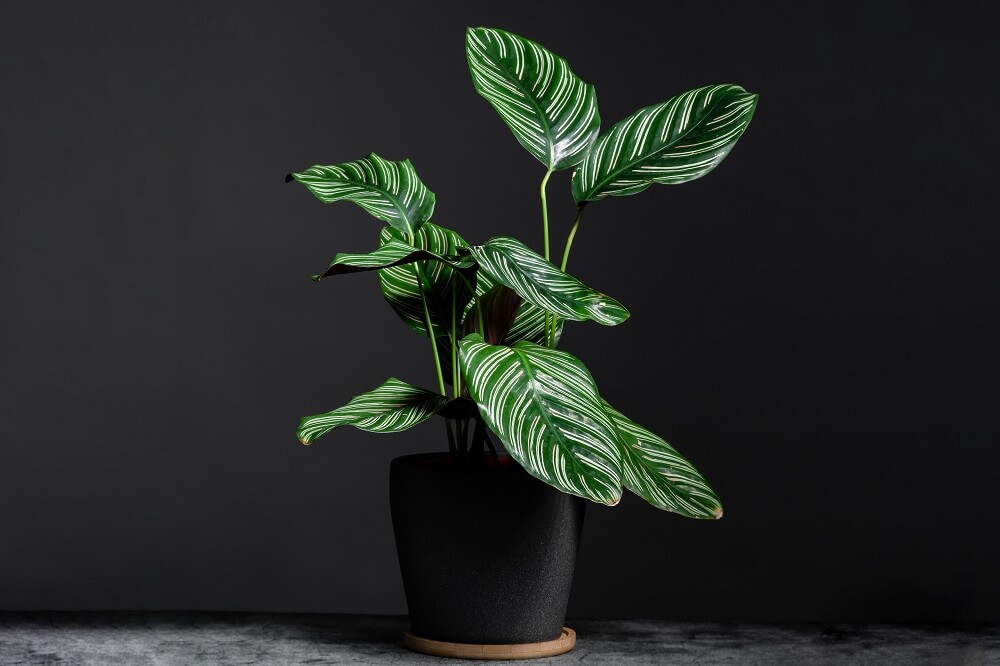
There are many types of Calathea, including the prayer plant, the zebra plant, and the rattlesnake plant. They are all safe for pets and have beautiful rounded leaves. Place in bright, indirect sunlight and keep moist.
7. Chinese Money Plant (Pilea Peperomioides)
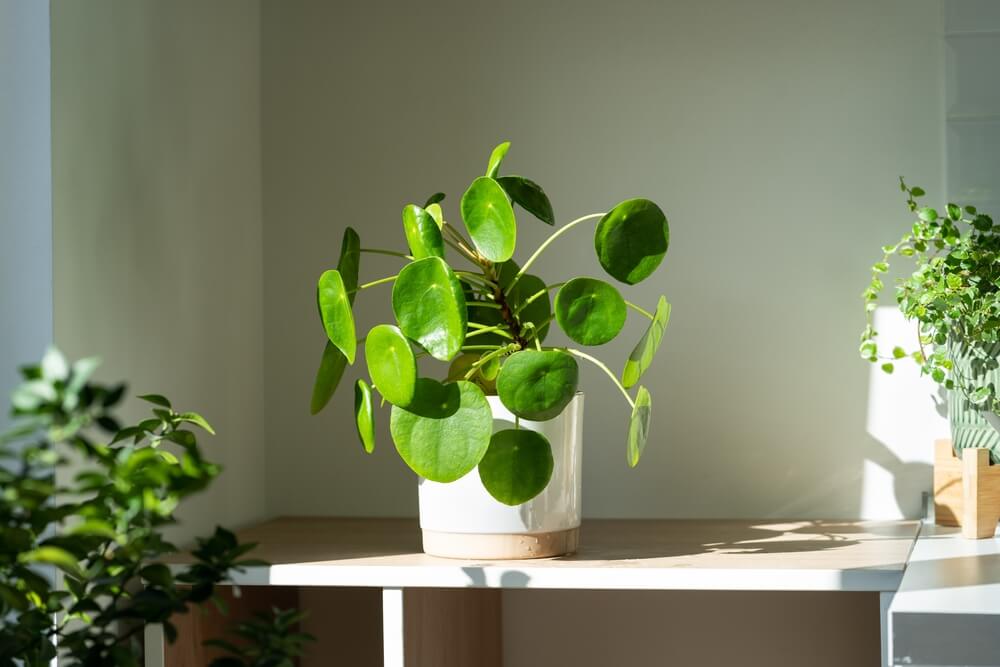
Also known as the pancake plant due to its round leaves that can reach up to half a foot wide, this is another low-maintenance choice for beginners looking for a new plant.
8. Christmas Cactus
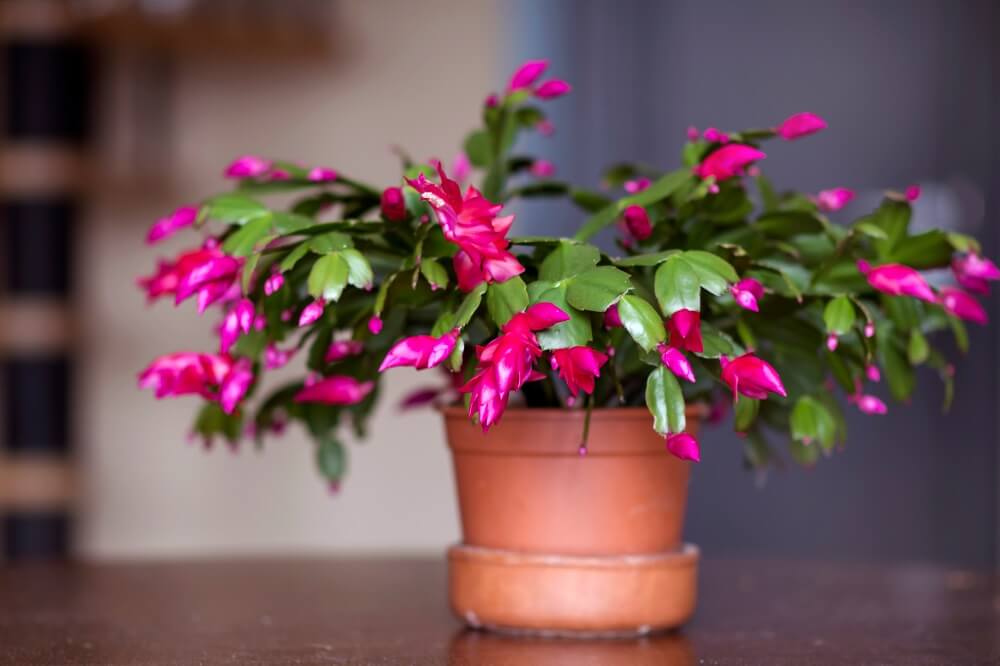
Known for its attractive red, white, or pink flowers which appear over the November – January time, this bright cactus requires lots of moisture, so a humidifier or something similar will help for best flowering results.
9. Delosperma Echinatum
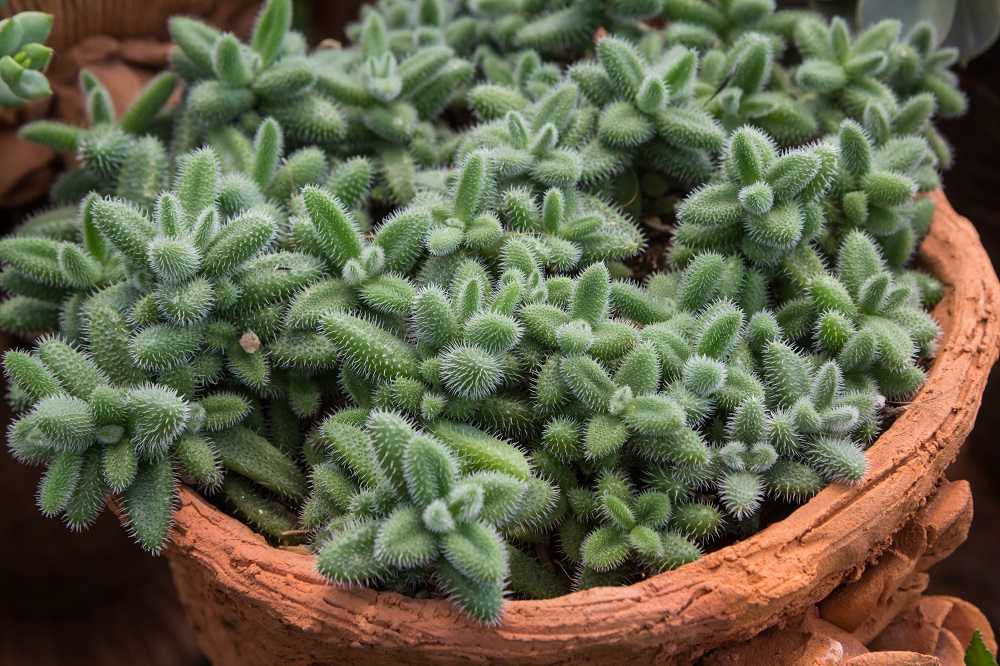
Also known as the prickle plant, this is a hairy succulent. Place in a sunny spot and don’t overwater. It doesn’t often flower, but when it does it’s very pretty, with delicate, small yellow blooms.
10. Freesia
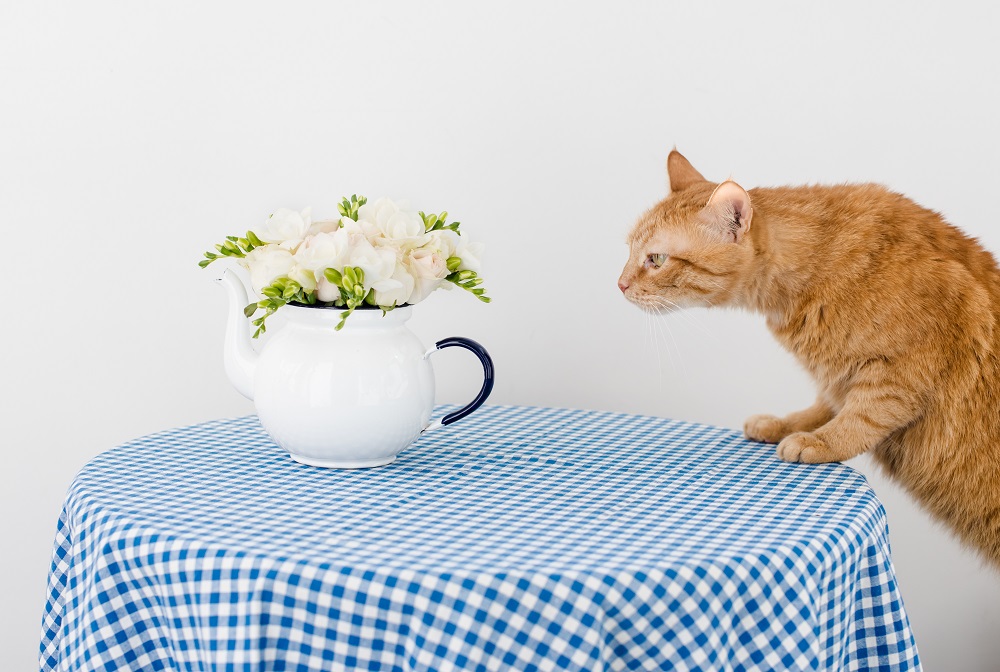
These pretty and sweet-smelling blooms are non-toxic to cats and are considered very safe to have in homes with pets, whether grown or bought as part of a bouquet.
11. Gerbera Daisy
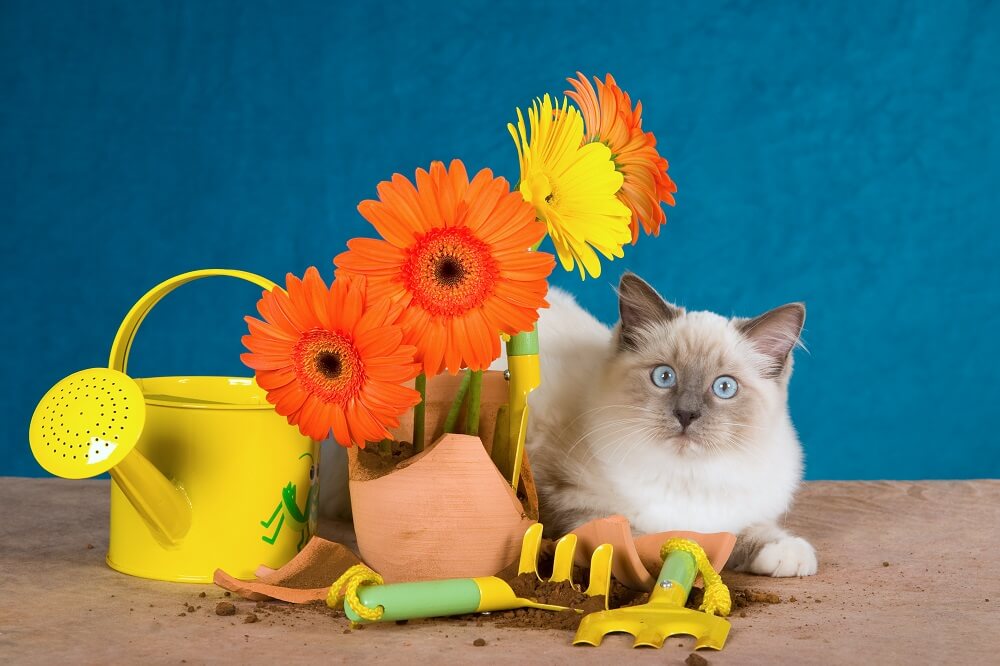
Also called the African daisy, these lovely cat-friendly flowers come in a range of vibrant colors and are often used in arrangements and bouquets. Non-toxic to pets, they are safe to display in feline homes.
12. Gloxinia
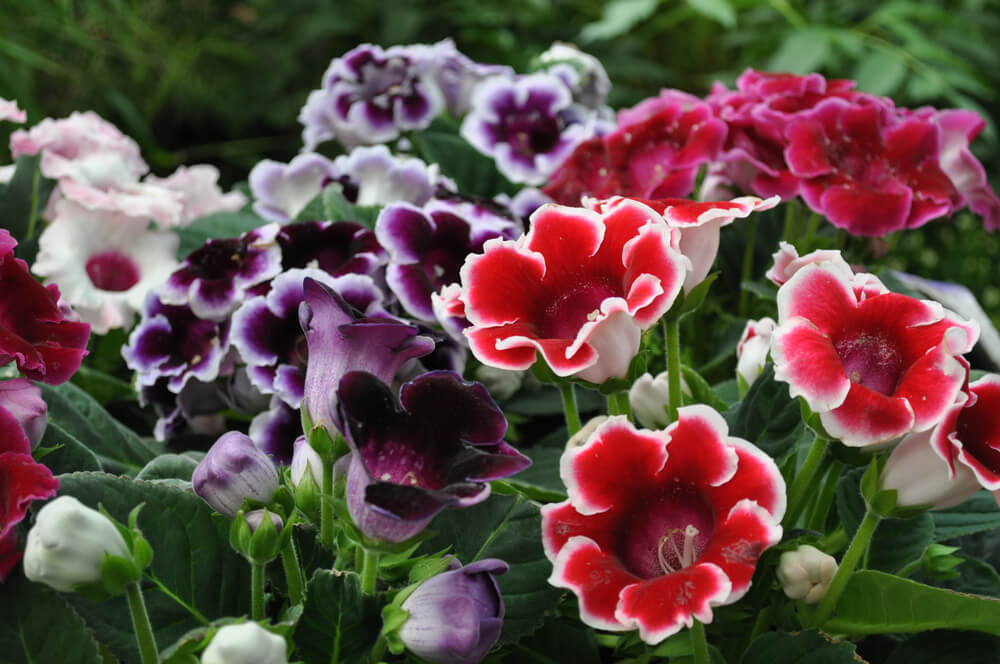
With blue, red, and purple flowers, this is an extremely pretty plant. Growing well in light conditions, it may have to share a sunny windowsill with those other well-known sun lovers – cats!
13. Grape Ivy (Cissus Discolor)
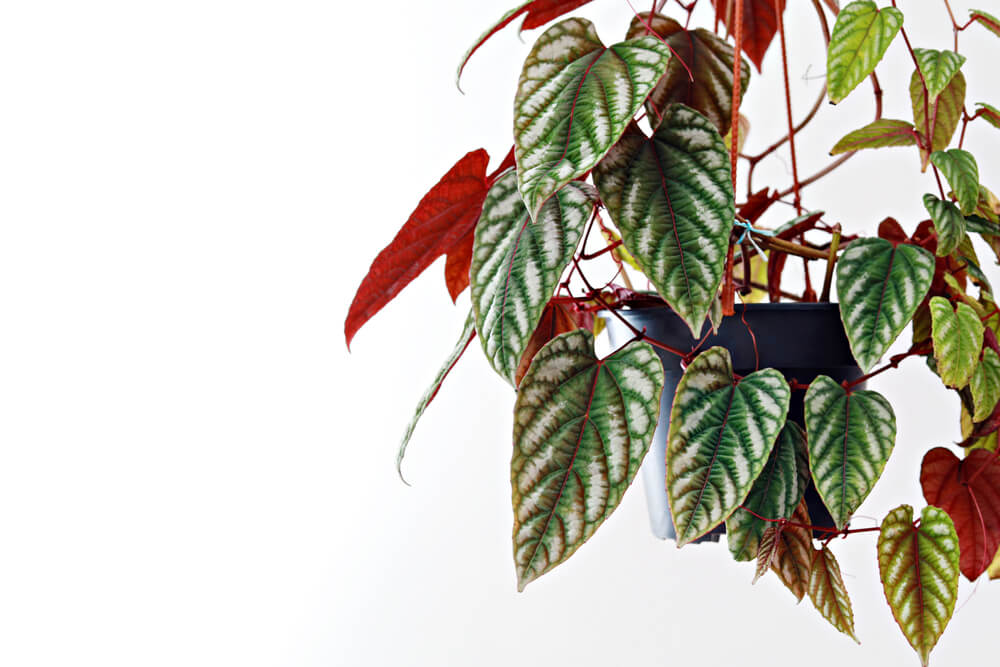
This is a beautiful climbing vine, with stems up to six feet long. It can be grown in a raised pot or hanging planter so that its long stems and variegated leaves can trail down to be admired. The leaves are dark green with silver markings and purple undersides, and it requires bright but indirect light.
14. Haworthia Fasciata (Zebra Plant)
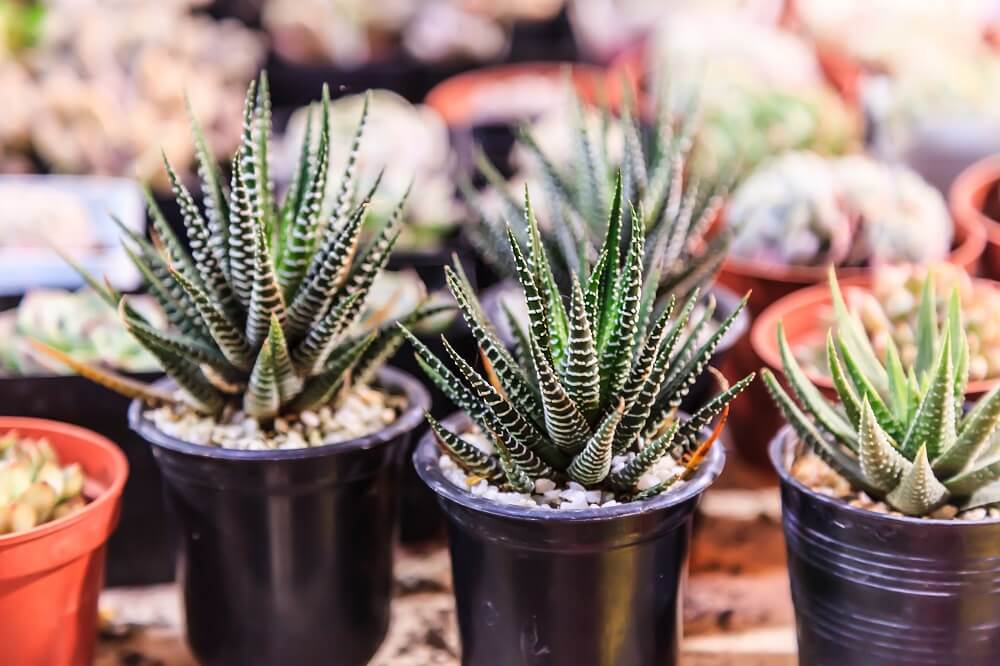
This succulent is safe for pets but does look very similar to aloe vera – which is not. Its striped leaves are a distinctive and striking look to add to your home while keeping your kitty safe.
15. Money Tree (Pachira Aquatica)
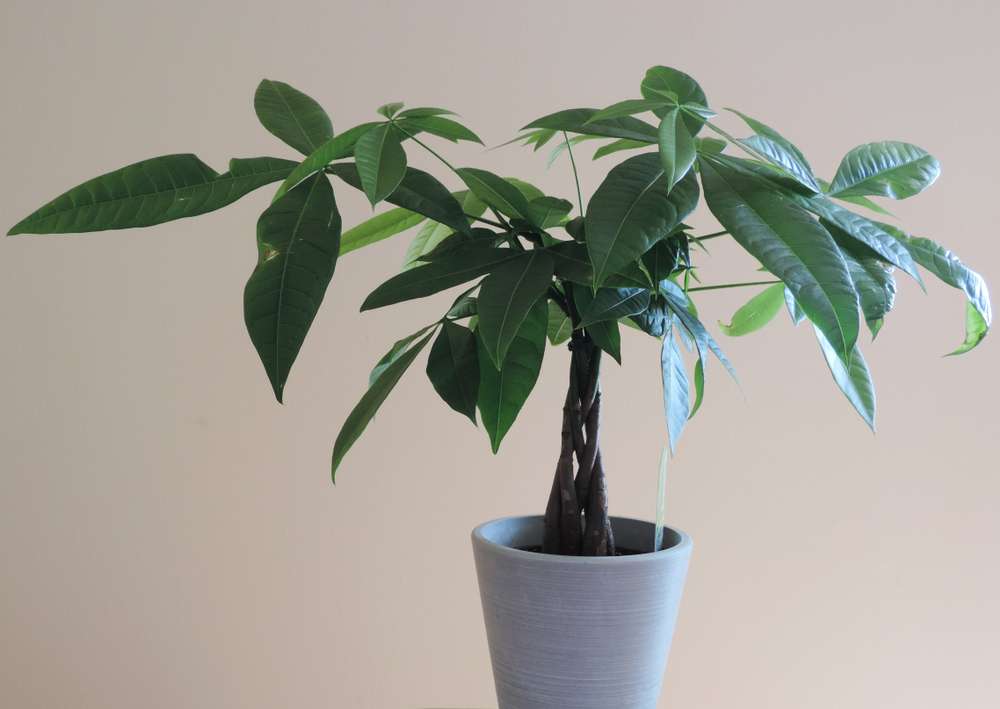
Thought to bring great fortunes, the money tree is fairly easy to look after, needing regular watering and a bright spot out of direct light. It stores water in the main trunk, so take care not to overwater it.
16. Orchids
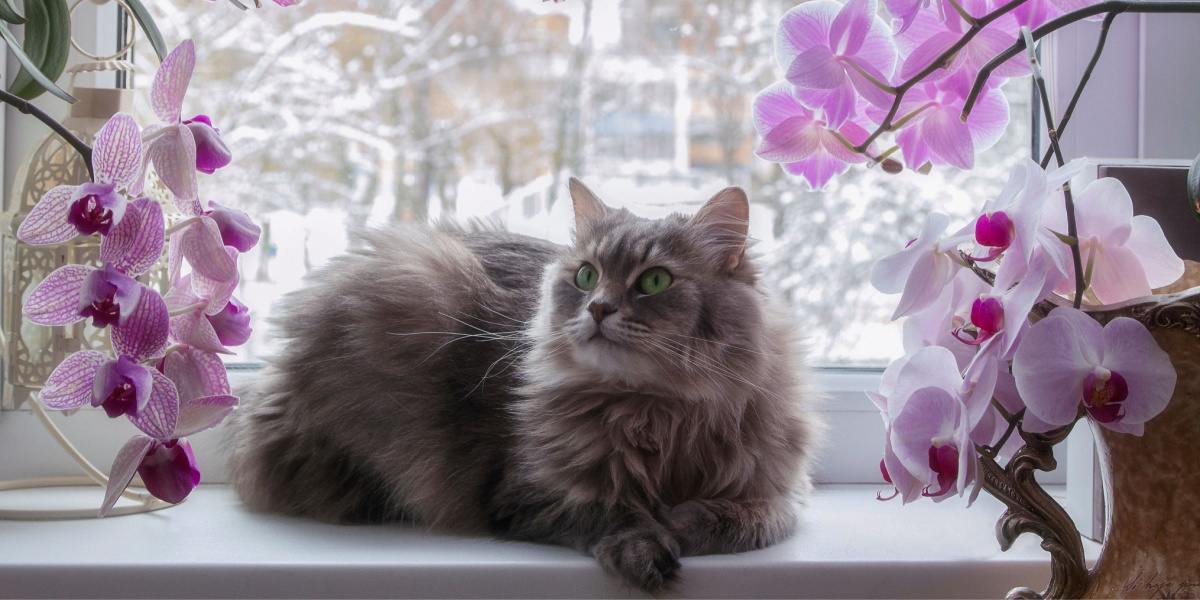
Many types of orchids are cat-safe. The moth orchid has particularly pretty and exotic flowers but can be tricky to grow, being choosy about how much sunlight and water it needs.
17. Parlor Palm
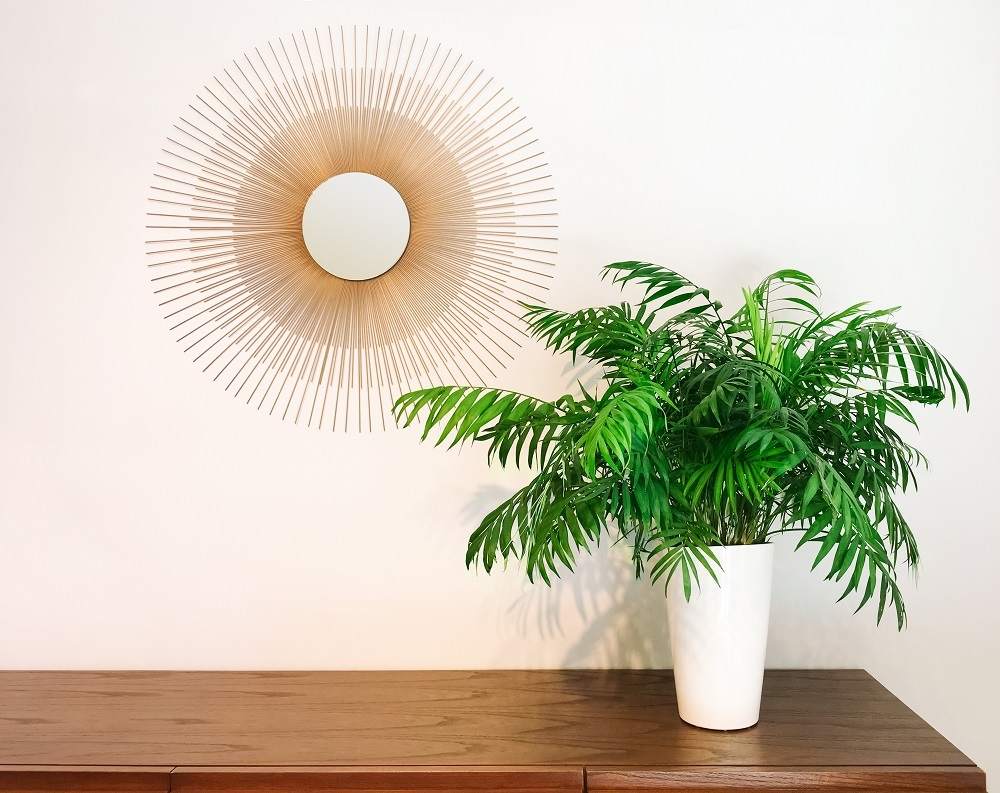
Striking and tall, the parlor palm is a popular choice for pet owners because it is both pet-safe and fairly easy to look after. The Kentia palm is another good option for a tall plant – although this can grow up to 40 feet high.
18. Roses

These classic blooms are, thankfully, not toxic to cats. They can be safely grown or displayed in homes and gardens. Ingesting rose plants may cause mild tummy upsets, and the thorns can cause irritation, but they are generally safe.
19. Spider Plant (Chlorophytum Comosum)

Popular with beginners and enthusiasts alike, these low-maintenance plants are pet-safe and non-toxic. They can be kept indoors, or trail from a hanging basket. They’re even easy to make new plants from if you want to expand your collection.
20. Sunflowers
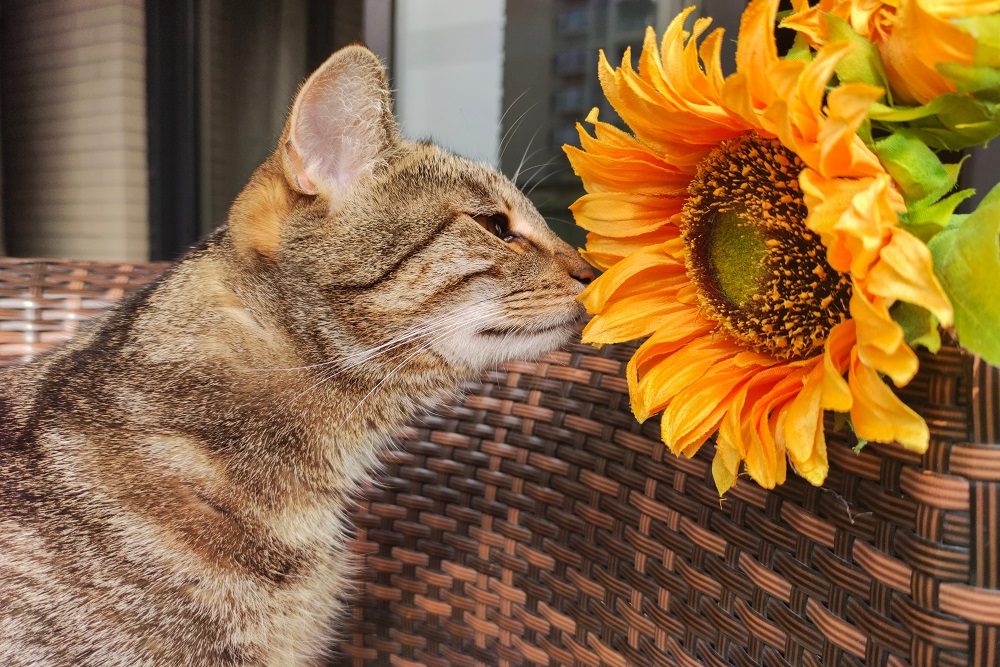
Who can resist a smile when you see a tall sunflower with its brilliant large yellow face pointed to the sun? Easy to grow and striking in appearance, it’s good news for cat owners that these lovely flowers are safe as well as beautiful.
21. Watermelon Peperomia
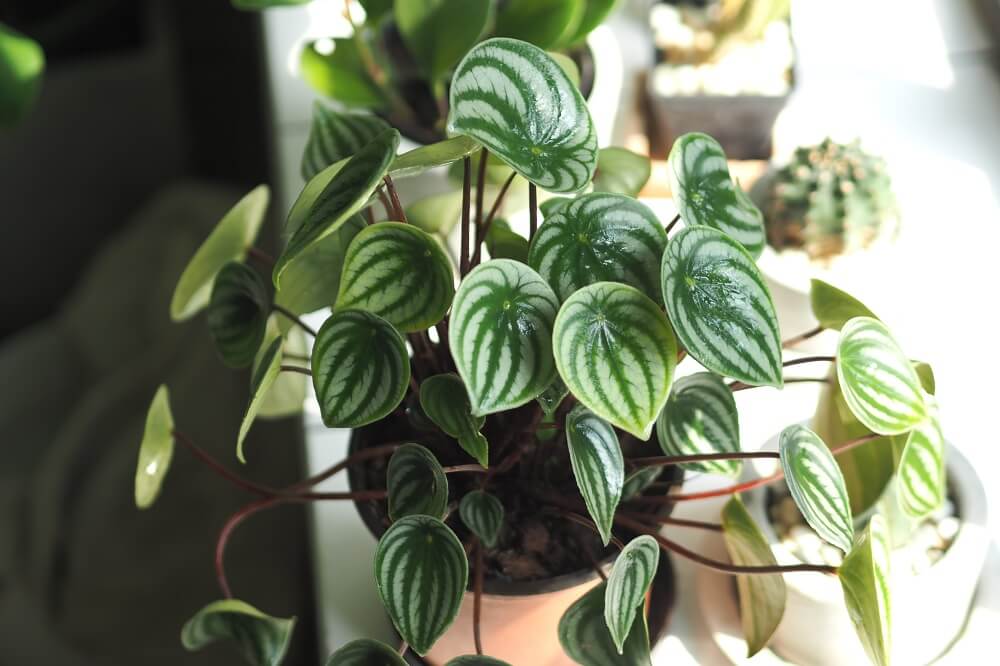
Named for their leaf markings, which look like the outer rind of a watermelon, these versatile plants can look at home in a pot on a shelf or windowsill or a hanging basket. Keep them out of direct sunlight and they will cope well with a little neglect if you’re a busy pet owner.
Although this is not a complete list of cat-friendly flowers and plants, with others including sedum varieties, the polka dot plant, the staghorn fern, and hoyas, it is fairly comprehensive. The ASPCA provides a full list of toxic and non-toxic plants for cats.
Cats And Plants: Safety Tips
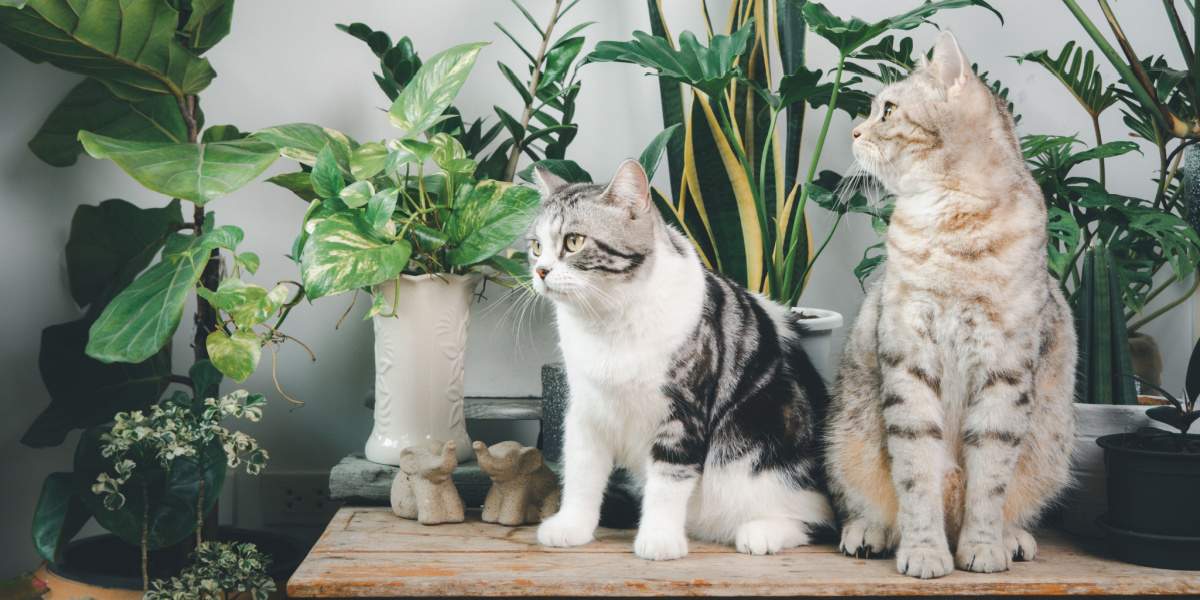
Although the above plants are non-toxic and considered safe for cats, it is always worth considering all hazards when it comes to our mischievous felines. Most flowers can cause digestive upsets if eaten in enough quantity.
Here are some top tips for coping with curious cats and houseplants or flowers.
- Keep plants and flowers out of reach of pets as much as possible
- Use solid, heavy pots for indoor plants to avoid your cat knocking them over
- Use stones or pebbles around the earth at the base of plants to make them less attractive for digging
- Have a ‘plant room’ which is off limits to cats
Also Read: 10 Proven Ways Keep Cats Out Of Plants
Cat-Friendly Flowers and Plants: Final Thoughts
If you’re hoping to become green-fingered as well as a pet parent, this is an excellent list to get you started on your flower-power journey. There are plenty of pet-safe options when it comes to plants, whether you’re looking to buy some blooms to brighten up your home or to grow a low-maintenance house plant to bring some greenery and oxygen into your home.
However, cats are curious creatures and it is always a good idea to make your home as safe as you possibly can. Replacing dangerous flowers, such as lilies, with safe alternatives, such as sunflowers, is a responsible step for any cat owner.
Also Read: 10 Hacks To Keep Cats Away From Plants
Frequently Asked Questions
Are roses toxic to cats?
Roses are considered non-toxic to cats. However, like most flowers, they can cause stomach upset for cats if eaten. The thorns can cause irritation and damage to a cat’s mouth and gastrointestinal tract if eaten.
Can my cat be around flowers?
Some flowers are perfectly safe to have around cats, including roses, freesias, and sunflowers. Others can be very harmful, such as lilies, daffodils, and tulips.
Are sunflowers safe for cats?
Sunflowers are generally safe and are considered non-toxic to pets. However, like most flowers, they could potentially cause a mild digestive upset if eaten by cats.
